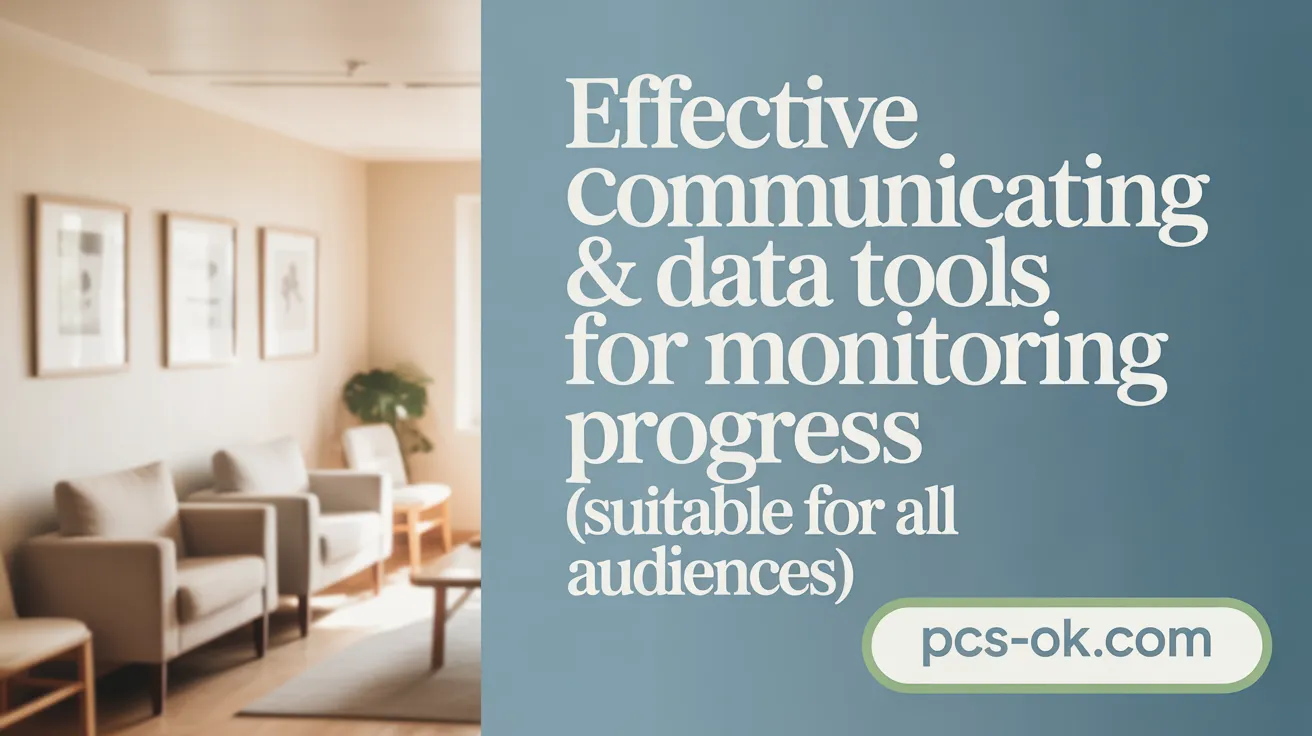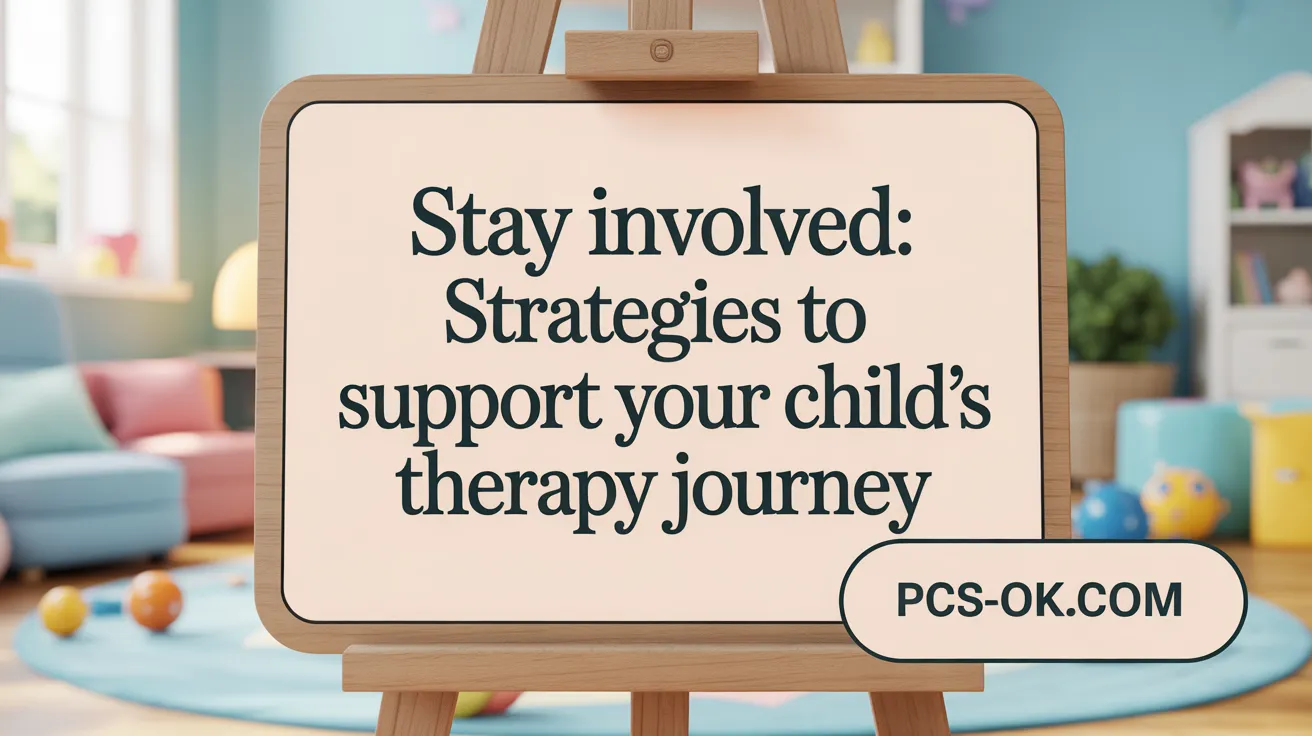How Parents Can Track Progress in Therapy Sessions
Understanding Your Role in Tracking Therapy Progress
Parents play a crucial role in their child’s therapy journey by actively monitoring and supporting progress. Therapy is often a complex, non-linear process that requires patience, consistent observation, and collaboration with professionals. This article provides comprehensive guidance on how parents can effectively track their child’s progress through various therapy modalities like ABA and play therapy, understand assessment techniques used by therapists, and remain engaged advocates in their child’s development.
Effective Methods and Techniques for Parents to Monitor Their Child’s Therapy Progress

How can parents communicate effectively with therapists?
Parents should establish consistent communication channels with their child’s therapists, including regular updates and feedback sessions. Reviewing progress reports, assessments, and therapy notes helps parents stay informed about their child’s development. Open dialogue facilitates understanding of therapy goals, challenges, and achievements, enabling collaborative decision-making.
What are the best tools for tracking treatment milestones?
Behavior charts, milestone trackers, and data collection sheets serve as practical tools for recording specific behaviors and skill improvements over time. These enable parents to observe patterns and measure progress on objectives such as emotional regulation, social skills, or academic performance. Tracking these milestones helps in setting realistic goals and adjusting strategies as needed.
How can visual aids like graphs and charts help?
Visual representations like graphs and trend charts make behavioral data more understandable. They clearly illustrate progress or setbacks over periods—such as decreasing tantrums or increasing use of communication skills—making it easier for both parents and therapists to evaluate therapy efficacy visually.
Why are anecdotal records valuable?
Anecdotal records involve detailed, objective observations of behaviors and emotional states during daily routines or therapy. Documenting spontaneous requests, eye contact, or emotional reactions provides qualitative insight into a child’s growth, supplementing quantitative data and capturing subtle improvements.
How does collaboration with caregivers and teachers benefit progress tracking?
Gathering feedback from those involved in the child’s daily life, such as teachers and caregivers, offers a broader perspective. Regular input about social interactions, classroom behavior, and emotional responses helps create a comprehensive picture of the child’s development outside therapy sessions.
Why is consistent data collection crucial?
Routine documentation and observation establish reliable data trends, essential for evaluating therapy outcomes. Using consistent methods—such as frequency counts, duration measures, or standardized assessments—ensures that progress is measured accurately, guiding necessary adjustments in the treatment plan.
How can participation in therapy support progress?
Parents’ active involvement, including attending sessions when possible, practicing strategies at home, and reinforcing learned skills, significantly enhances progress. Their participation ensures that therapy techniques are integrated into daily routines, fostering generalization of skills across settings.
| Approach | Description | Expected Outcome |
|---|---|---|
| Regular communication | Dialogue with therapists and review reports | Increased understanding and shared goals |
| Usage of progress charts | Tracking behaviors, skills, milestones regularly | Clear visualization of progress |
| Visual data analysis | Graphs and charts to depict trends over time | Easier identification of improvements or issues |
| Anecdotal record keeping | Detailed observations of behavior in natural settings | Qualitative insights into development |
| Teacher/caregiver input | Feedback from daily routines outside therapy | Holistic view of child’s growth |
| Consistent data collection | Using standardized methods regularly | Reliable progress measurement |
| Active participation | Engaging in therapy and home practice | Reinforcement and skill generalization |
By employing these methods, parents can effectively monitor and support their child’s progress, ensuring a successful therapeutic journey.
Best Practices for Observing Developmental Improvements and Celebrating Small Wins

Parents play a vital role in monitoring their child’s progress during therapy. A good starting point is becoming familiar with the therapy goals set by professionals. Understanding what specific skills or behaviors are targeted helps parents recognize improvements when they occur.
Maintaining a consistent home environment is equally important. Establishing routines and integrating therapeutic activities into daily life creates a supportive setting where children can practice new skills. This consistency reinforces what is learned during sessions and provides stability that children need to thrive.
Regular communication with therapists through check-ins and updates ensures parents stay informed about their child’s development. Asking targeted questions about progress and areas that need reinforcement helps align home efforts with therapy goals.
Celebrating small achievements is encouraged. Recognizing moments like a child managing frustration through deep breaths or trying a new activity despite anxiety boosts confidence and motivation. These small wins contribute to building resilience and joy in the learning process.
Patience and positive reinforcement are essential. Growth is often slow and non-linear, with setbacks being normal. Remaining patient, encouraging effort, and rewarding progress foster a positive emotional climate that supports continuous development.
Furthermore, collaborating with teachers and other caregivers creates a comprehensive support network. Educating oneself about the child’s condition and therapy strategies enhances consistency across settings. This collective approach ensures that everyone is working toward shared goals.
In summary, by understanding therapy objectives, maintaining routines, communicating regularly with professionals, celebrating progress, practicing patience, and partnering with educators, parents can effectively observe and support their child’s ongoing growth.
Understanding Therapist Tools and Assessment Techniques for Evaluating Progress
What tools and assessment techniques do therapists use to evaluate a child’s progress in therapy?
Therapists employ a variety of methods to carefully track and assess a child’s development during therapy. Standardized assessments such as the VB-MAPP (Verbal Behavior Milestones Assessment and Placement Program), ABLLS (Assessment of Basic Language and Learning Skills), CBCL (Child Behavior Checklist), and SDQ (Strengths and Difficulties Questionnaire) are frequently used to provide objective measurements of developmental progress. These tools are administered periodically and help establish baseline skills, measure growth, and identify areas needing targeted intervention.
Alongside standardized tests, therapists utilize quantitative data collection techniques, including frequency, duration, and latency recording. For example, tracking how often a child engages in a specific behavior, how long certain actions last, or how quickly they respond to prompts offers tangible insights into behavioral changes.
Qualitative methods such as anecdotal records are also essential. These detailed, objective observations capture subtle progress like improvements in eye contact, spontaneous requests, or emotional regulation. These records involve therapists noting specific behaviors and interactions during sessions, providing rich context to quantitative data.
Routine outcome monitoring involves regularly reviewing progress using goal tracking sheets, progress notes, and observational questionnaires. These tools help both the therapist and caregivers see how behaviors evolve over time, making it easier to adjust treatment plans if needed.
Session observations and feedback questionnaires from parents, teachers, and the children themselves offer additional insights. They help verify whether progress noted in therapy sessions translates into real-world settings, supporting the overall goal of functional improvement.
Combining these various assessment techniques creates a comprehensive picture of a child’s progress. This multi-method approach ensures that therapy remains responsive to the child’s evolving needs and promotes effective, tailored interventions.
Indicators and Measurements of Progress in ABA and Play Therapy Modalities

What are the common indicators and measurements of progress in therapy modalities like ABA and play therapy?
Tracking progress in behavioral therapy and play therapy involves multiple methods to ensure a comprehensive assessment of a child’s development.
In ABA therapy, progress is often measured through quantitative data. This includes recording the frequency of specific behaviors, such as outbursts or requests, and measuring skill acquisition rates, like increased use of words or new daily living skills. Therapists utilize standardized tools like the VB-MAPP, ABLLS, and the Vineland Adaptive Behavior Scales. These assessments compare a child’s skills to developmental norms and provide objective milestones that highlight strengths and areas needing improvement.
Behavioral milestones serve as important indicators. These include reductions in challenging behaviors like tantrums and increased social skills such as eye contact, joint attention, and self-regulation. Data collection methods like graphs and goal tracking sheets help visualize progress over time, making it easier to identify trends and set future objectives.
In play therapy, progress is exhibited through increased engagement during sessions, improved emotional expression, and better social interactions. Therapists observe changes in how children play, including their themes, emotional responses, and interactions with objects or peers.
Parent and teacher reports complement observational data by providing insights into the child’s social, emotional, and behavioral changes across different settings. These reports often include impressions of mood, cooperation, and the child’s ability to generalize skills learned during therapy.
An essential aspect of monitoring progress is adjusting goals based on ongoing data. These adjustments often involve revisiting milestones, updating goal tracking sheets, and documenting developmental achievements in detailed notes.
Ultimately, using a combination of quantitative measurements, standardized assessments, and qualitative observations provides a reliable picture of a child’s growth and helps tailor interventions for optimal outcomes.
Strategies for Parents to Stay Involved and Support Their Child’s Therapy Journey

What strategies can parents use to stay involved and support their child’s therapy journey?
Parents play a vital role in their child’s therapeutic progress. One of the most important steps is maintaining open and honest communication with the child’s therapists. Regular updates, asking questions, and sharing observations from home help create a collaborative relationship.
Participating in assessments and goal setting at the start of therapy ensures that strategies are tailored to the child’s needs. When possible, attending sessions or check-ins allows parents to observe their child’s progress firsthand and understand the techniques used.
Reinforcing therapy techniques at home is another key strategy. For example, if a child is working on emotional regulation, parents can practice deep breathing exercises together or employ social stories provided by therapists. Creating a consistent and supportive environment helps the child generalize skills across different settings.
Active involvement during therapy sessions, such as sitting in or participating in activities, can enhance engagement and understanding. For older children, encouraging independence while providing support maintains motivation and self-confidence.
Additionally, parents should educate themselves about the specific therapy modalities being used, such as ABA or play therapy. Understanding the goals and methods enables better advocacy and reinforces learning outside of sessions.
Celebrating small wins, like managing anger through deep breaths or trying new activities despite anxiety, fosters motivation. Patience is also crucial, as progress in therapy is often slow and non-linear, with setbacks being normal.
Building trust with the therapist, involving family members, and establishing routines that support progress help strengthen the child’s overall development. The combination of these strategies ensures a supportive environment where the child can thrive in their therapy journey.
The Importance of Consistent Documentation and Use of Technology in Tracking Progress

Keeping detailed session notes
Maintaining thorough and accurate session notes is fundamental in tracking a child’s progress during therapy. These notes should be objective, specific, and descriptive, capturing behaviors, interactions, emotional reactions, and responses to interventions. Detailed documentation helps therapists monitor changes over time, identify patterns, and tailor interventions accordingly.
Objective, specific, and descriptive observations
Effective observation involves noting what happens during each session with clarity. Recording facial expressions, body language, and emotional responses provides rich qualitative data. For example, instead of saying a child is ‘engaged,’ a therapist might note that the child requested a favorite toy or maintained eye contact for a specific number of seconds, offering concrete indicators of progress.
Benefits of technology such as data collection apps and AI note-taking systems
Leveraging technology, including data collection applications and AI-based note-taking systems like Mentalyc, enhances the accuracy and efficiency of progress monitoring. These tools facilitate real-time data entry, reduce human error, and generate structured reports automatically. They streamline the documentation process, allowing therapists to focus more on direct interactions with children.
Graphing behavioral data for trend visualization
Visual tools like graphs are essential in representing behavioral trends over time. Charting data such as tantrum frequency or skill acquisition rates helps both therapists and parents see progress clearly. These visualizations can reveal whether interventions are effective or require adjustments, making data more accessible and understandable.
Role of documentation in treatment planning and insurance
Accurate records support ongoing treatment planning by providing evidence of progress and response to therapy. Well-maintained documentation is often necessary for insurance claims and funding, demonstrating that therapy is effective and necessary. Consistent records also help in revising goals and planning next steps.
Challenges in data collection and interpretation
Despite its importance, collecting accurate data can be challenging. Inconsistencies in data entry, subjective interpretations, and varying observation skills may affect reliability. Addressing these challenges involves team collaboration, training, and using standardized data collection practices.
Collaboration between parents and therapists for accuracy
Parents play a vital role in ensuring data accuracy, especially regarding behaviors observed outside therapy sessions. Collaborating with parents through progress reports and shared data collection allows for a comprehensive view of the child’s development. This teamwork enhances goal setting and makes adjustments more responsive to real-world circumstances.
| Aspect | Focus | Tools/Methods |
|---|---|---|
| Session notes | Detailed, descriptive | Manual notes, AI systems |
| Data collection | Quantitative and qualitative | Frequency, duration, anecdotal records |
| Visualization | Trends over time | Graphs, charts |
| Collaboration | Parent and therapist input | Reports, shared apps |
| Challenges | Data accuracy | Training, standardized procedures |
Supporting Your Child’s Growth Through Active Engagement and Monitoring
Tracking progress in therapy requires a multifaceted approach that combines objective data, qualitative observations, and collaborative relationships between parents and therapists. By employing effective monitoring techniques, understanding assessment tools, and celebrating even small milestones, parents can help ensure their child’s therapy is effective and tailored to their evolving needs. Consistent documentation and the thoughtful use of technology further enhance accuracy and communication, making the journey toward developmental improvements clearer and more rewarding. Ultimately, staying actively involved, patient, and informed empowers parents to be champions of their child’s success in therapy.
References
- How to Measure Progress between Sessions with Children …
- How to Track Progress in Child Therapy
- Track Your Child’s ABA Therapy Progress | Westside
- How to Track Progress in ABA Therapy Through Reports …
- How Do Play Therapists Evaluate Progress?
- Effective Strategies for Evaluating In-home ABA Therapy
- Play Therapy Progress Notes (Tips to Write them)
- Using parents as therapists to evaluate appropriate …
- Involving Parents in Child Mental Health Treatments
